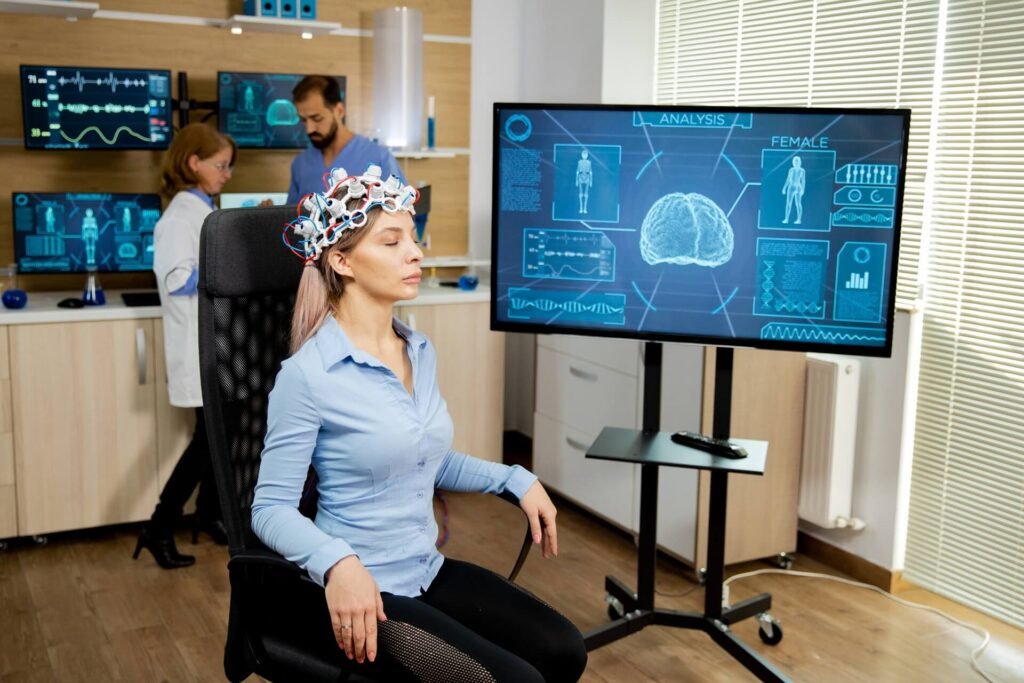Abstract
This paper provides the framework and supporting evidence for a highly efficient closed-loop paradigm that modifies a classic learning scenario using real-time brain activity in order to improve learning performance in a perceptual-cognitive training paradigm known as 3-dimensional multiple object tracking, or 3D-MOT. Results demonstrate that, over 10 sessions, when manipulating this novel task by using real-time brain signals, speed and degree of learning can be substantially improved compared with a classic learning system or an active sham-control group. Superior performance persists even once the feedback signal is removed, which suggests that the effects of enhanced training are consolidated and do not rely on continued feedback. This type of learning paradigm could contribute to overcoming one of the fundamental limitations of neurofeedback and other cognitive enhancement techniques, a lack of observable transfer effects, by utilizing a method that can be directly integrated into the context in which improved performance is sought.
Introduction
Of the numerous domains in which neuroscience is being widely applied, learning and cognitive enhancement figure prominently in both scientific research and popular culture. While there is a burgeoning interest in these techniques and technologies, one major issue is still to be addressed. Evidence for transfer, the replication or application of an enhanced ability in a context other than that of the training paradigm, is largely lacking1.
Cognitive enhancement paradigms typically target given function or set of cognitive abilities, train them in a given paradigm, and then use standardized tests and outcome measures to demonstrate cognitive enhancement and transfer. While cognitive enhancement appears attainable in a number of domains, evidence of transfer remains severely limited1. This novel research proposes integrating EEG-neurofeedback directly into an existing learning paradigm in order to demonstrate that it is possible to overcome the weak transfer effects observed in existing cognitive enhancement and neurofeedback literature2 by applying enhancement directly into the target context.
Banich and Compton define skill learning as “the acquisition—usually gradually and incrementally through repetition—of motor, perceptual, or cognitive operations or procedures that aid performance.”3 Here, we are especially interested in the perceptual and cognitive operations. Since all learning is the result of neuroplasticity, an updated brain-based approach to learning, using all of the technological advancements of the past decades, is fundamentally needed.
In developed parts of the world, a large part of skill learning comes from academic education. The developed world acknowledges some shortfalls of these systems, however, still tout them as the best4. Yet, from preschools to the most sophisticated institutions of higher learning, we are still essentially using trial and error learning5. The base formula for this system is: spend time and energy trying to learn something, and then apply a post-hoc test to see if learning has occurred; thus providing feedback. If learning has occurred, move on to the next subject. If it does not, repeat (hopefully with a variation based on experience from the failed trial) and test again. This traditional type of learning paradigm is presented in Fig. 1a. The so-called ‘solution’ of simple repetition, though, appears to fall short in academic contexts6.




